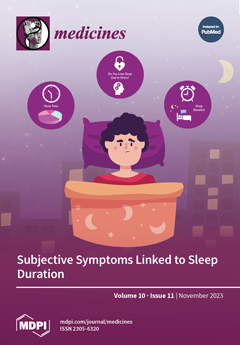Medicines, Volume 10, Issue 11 (November 2023) – 3 articles
The results suggest the existence of specific symptoms that may negatively affect sleep duration and point to the importance of emphasizing the self-assessment of sleeping habits as part of the self-monitoring of health in future occupational health. View this paper
- Issues are regarded as officially published after their release is announced to the table of contents alert mailing list.
- You may sign up for e-mail alerts to receive table of contents of newly released issues.
- PDF is the official format for papers published in both, html and pdf forms. To view the papers in pdf format, click on the "PDF Full-text" link, and use the free Adobe Reader to open them.




